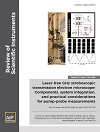
REVIEW OF SCIENTIFIC INSTRUMENTS
Scope & Guideline
Advancing the Frontiers of Scientific Measurement
Introduction
Aims and Scopes
- Instrumentation Development:
The journal emphasizes novel instrumentation design and development, showcasing new tools and systems that improve measurement accuracy, resolution, and operational capabilities in various scientific domains. - Measurement Techniques:
A core focus is on innovative measurement techniques that enhance the ability to collect data in challenging environments, including high energy density physics, plasma diagnostics, and materials characterization. - Interdisciplinary Applications:
Research published often spans multiple disciplines, including physics, chemistry, and engineering, reflecting the journal's commitment to addressing broad scientific challenges through advanced instrumentation. - Data Analysis and Processing:
The journal covers advancements in data acquisition, analysis methods, and computational techniques that facilitate the interpretation of experimental results, particularly in complex systems. - Real-Time and In-Situ Measurements:
There is a strong emphasis on the development of systems for real-time and in-situ measurements, allowing for dynamic observation and analysis of processes as they occur.
Trending and Emerging
- Machine Learning and AI in Instrumentation:
There is a growing trend towards integrating machine learning and artificial intelligence in instrumentation, enhancing data analysis capabilities and enabling real-time decision-making in experiments. - Miniaturization and Portability:
Emerging themes include the development of compact and portable instruments that facilitate fieldwork and remote measurements, making advanced technology accessible outside traditional laboratory settings. - Multiplexed and High-Throughput Systems:
Research increasingly focuses on multiplexed systems that allow simultaneous measurements across multiple parameters, significantly increasing data throughput and efficiency. - Advanced Imaging Techniques:
There is a notable increase in publications related to high-resolution and advanced imaging techniques, including x-ray and electron microscopy, which provide deeper insights into material properties at the nanoscale. - In-Situ and Real-Time Monitoring:
A significant emphasis is being placed on in-situ and real-time measurement systems that allow researchers to monitor dynamic processes, thereby enhancing the understanding of complex phenomena.
Declining or Waning
- Traditional Measurement Techniques:
There is a noticeable decline in papers focused on conventional measurement techniques that have been largely replaced or augmented by more advanced, automated, and digital methods. - Static Instrumentation Designs:
Static designs that do not incorporate adaptive or real-time capabilities are becoming less prevalent, as the field moves towards more versatile and dynamic instrumentation. - Low-Resolution Imaging Systems:
The journal has seen fewer submissions related to low-resolution imaging systems, as the trend shifts towards high-resolution and sophisticated imaging techniques that provide deeper insights into material properties. - Non-Automated Data Processing:
Works focusing on manual or less automated data processing techniques are declining, reflecting the increasing reliance on machine learning and advanced algorithms for data interpretation. - Single-Discipline Focused Instruments:
Research specifically targeting single-discipline instruments is waning as interdisciplinary approaches gain traction, leading to more integrated systems that serve multiple scientific fields.
Similar Journals
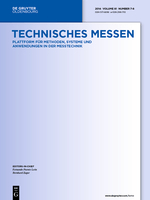
tm-Technisches Messen
Fostering Collaboration in Engineering Excellencetm-Technisches Messen is a reputable academic journal published by WALTER DE GRUYTER GMBH, focusing on the field of engineering, specifically in Electrical and Electronic Engineering and Instrumentation. With a rich history dating back to 1931, this journal serves as a critical platform for disseminating research, innovations, and developments relevant to measurement and instrumentation technologies. Despite its current quartile rankings of Q3 in Electrical and Electronic Engineering and Q4 in Instrumentation for 2023, the journal continues to attract submissions from leading researchers, offering insights that drive advancements within these fields. Researchers and practitioners can access a wealth of knowledge through this publication, fostering collaboration and sparking new ideas. Located in Berlin, Germany, the journal operates without an open-access model, making it essential for universities and institutions to play an integral role in supporting their library access to this valuable resource. As the journal continues to evolve through 2024 and beyond, it remains a significant contributor to the global discourse in measurement technologies, making it a must-read for anyone involved in these dynamic areas of study.

INSTRUMENTS AND EXPERIMENTAL TECHNIQUES
Advancing the Frontiers of Instrumentation and ExperimentationINSTRUMENTS AND EXPERIMENTAL TECHNIQUES is a renowned academic journal dedicated to the field of instrumentation and experimental methodologies within physics and engineering. Published by MAIK NAUKA/INTERPERIODICA/SPRINGER, this journal serves as a vital platform for disseminating innovative research findings, detailed experimental techniques, and advancements in instrumentation technologies. Operating since its inception in 1968, it has established itself as a reputable source for scholars and industry professionals, though it currently holds a category quartile ranking of Q4 in Instrumentation based on the 2023 metrics. With an ISSN of 0020-4412 for print and E-ISSN of 1608-3180 for electronic formats, the journal is accessible to a global audience, offering crucial insights that can lead to significant advancements in experimental approaches across various scientific domains. Despite a current Scopus ranking placing it in the lower percentile, the journal continues to contribute to the ongoing discussions and developments in instrumentation, making it an essential read for researchers, professionals, and students eager to enhance their knowledge and expertise in this specialized area.

ACS Measurement Science Au
Elevating Measurement Science with Cutting-Edge ResearchACS Measurement Science Au, published by the American Chemical Society, is a leading open-access journal that has been at the forefront of measurement science since its inception in 2021. With its strong impact and esteemed reputation in the field, the journal has achieved impressive Scopus rankings, including Q1 in Analytical Chemistry and Q2 in Electrochemistry, reflecting its commitment to high-quality research and innovation. As a vital resource for researchers, professionals, and students alike, ACS Measurement Science Au covers a broad scope encompassing advanced measurement techniques across various domains, including spectroscopy and electrochemistry. With its open-access model, the journal ensures that cutting-edge research is readily available to the global scientific community, supporting collaboration and knowledge sharing. By fostering discussions that bridge different disciplines within measurement science, this journal plays a crucial role in advancing the forefront of analytical methods and instrumentation.

Geoscientific Instrumentation Methods and Data Systems
Advancing Earth Sciences through Innovative Instrumentation and Data SystemsGeoscientific Instrumentation Methods and Data Systems, published by COPERNICUS GESELLSCHAFT MBH, is a distinguished open-access journal dedicated to the dissemination of innovative methodologies, advanced instrumentation, and comprehensive data systems in the earth sciences. With an ISSN of 2193-0856 and an E-ISSN of 2193-0864, this journal has been paving the way for insightful research since its inception in 2012. Based in Germany, it serves a global audience interested in atmospheric science, geology, and oceanography, reflected in its impressive Scopus rankings and recent categorizations as Q2 and Q3 in these vital fields. The journal’s mission is to foster interdisciplinary collaboration and facilitate knowledge exchange, providing a platform for researchers and professionals to share significant advancements and challenge the frontiers of geoscientific instrumentation and methods. As an open-access journal, it ensures that pivotal research findings are accessible to a wider audience, promoting inclusivity and rapid dissemination of knowledge critical to addressing global challenges in earth and planetary sciences.

MEASUREMENT & CONTROL
Exploring New Frontiers in Measurement and ControlMEASUREMENT & CONTROL is a prominent journal published by SAGE PUBLICATIONS LTD, dedicated to advancing the fields of applied mathematics, control systems, and instrumentation. With an ISSN of 0020-2940 and an E-ISSN of 2051-8730, this open-access journal has been serving the academic community since 1968, ensuring that essential research findings are accessible to all. As of 2023, it is recognized within the Q3 quartile of Scopus rankings in key categories including Applied Mathematics, Control and Optimization, and Instrumentation, highlighting its relevance in an ever-evolving scientific landscape. The journal not only fosters high-quality research but also encourages the exchange of innovative ideas and techniques, making it an essential resource for researchers, professionals, and students alike. With a focus on the latest advancements and methodologies, MEASUREMENT & CONTROL remains a vital platform for disseminating knowledge and fostering collaboration within these interdisciplinary fields.
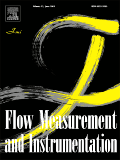
FLOW MEASUREMENT AND INSTRUMENTATION
Connecting Theory and Practice in InstrumentationFLOW MEASUREMENT AND INSTRUMENTATION, published by Elsevier Science Ltd, serves as a vital resource for researchers and professionals in the fields of Instrumentation, Electrical and Electronic Engineering, Computer Science Applications, and Modeling and Simulation. With an impressive trajectory since its inception in 1989 and extending to 2024, this journal has gained a notable reputation, ranking in the upper quartiles of various categories within the 2023 Scopus metrics, reflecting its significant contribution to advancing knowledge in flow measurement technologies and methodologies. Although it does not offer Open Access options, the journal is well-regarded for its rigorous peer-review process, ensuring high-quality, impactful research dissemination. The journal's emphasis on empirical studies and innovative instrument design establishes it as an essential platform for disseminating cutting-edge findings that facilitate practical applications and inform future research directions. Positioned within the United Kingdom, it attracts a global readership dedicated to the continuous enhancement of measurement sciences and engineering innovations.
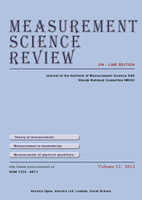
Measurement Science Review
Advancing the Frontiers of Measurement ScienceMeasurement Science Review is a distinguished open-access journal published by SCIENDO, dedicated to advancing the field of measurement science across various disciplines, including Biomedical Engineering, Control and Systems Engineering, and Instrumentation. Since its inception in 2008, it has actively contributed to the dissemination of innovative research and practices relevant to these fields, currently holding a notable Q3 ranking in its category as per the 2023 metrics. With an emphasis on robust scientific inquiry and practical applications, Measurement Science Review is positioned as an essential resource for researchers, professionals, and students seeking to enhance their understanding and expertise in measurement technologies. The journal provides an accessible platform for interdisciplinary dialogue and collaboration, making it a vital component of the academic landscape in Slovakia and beyond. Its publication track extends to 2024, ensuring timely access to cutting-edge research findings for a global audience.
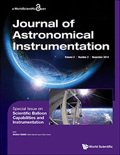
Journal of Astronomical Instrumentation
Illuminating the Cosmos through Innovative InstrumentationThe Journal of Astronomical Instrumentation, published by WORLD SCIENTIFIC PUBL CO PTE LTD, is a pioneering peer-reviewed journal that has established itself as a vital outlet for the dissemination of research in the fields of astronomy and astrophysics, as well as in instrumentation technologies. Since its inception in 2012, this international journal has provided a platform for researchers and practitioners to share their findings, innovations, and insights pertaining to astronomical tools and techniques. With an esteemed Q3 categorization in both Astronomy and Astrophysics and Instrumentation for 2023, it ranks within the top tier of journals in these disciplines, demonstrating its impact and relevance in the scholarly community. Covering a broad range of topics that encompass the design, development, and application of astronomical instruments, the journal also emphasizes technological advancements that enhance observational capabilities. Researchers, professionals, and students alike will find this journal an invaluable resource for staying abreast of current trends and breakthroughs in the field of astronomical instrumentation.

Frontiers in Physics
Innovative Insights for a Complex UniverseFrontiers in Physics is a prestigious peer-reviewed journal published by FRONTIERS MEDIA SA, dedicated to advancing the field of physics through innovative research and interdisciplinary approaches. Established as an Open Access journal in 2013, it has quickly become a vital resource for researchers, professionals, and students alike, with a shining presence in Scopus categories such as Biophysics, Materials Science, Mathematical Physics, and Physical Chemistry. With an impressive array of quartile rankings, including Q2 in several key areas, it positions itself firmly among leading journals in the field, reflecting its commitment to high-quality contributions. The journal's global reach and emphasis on collaborative research not only enhance its visibility in the scientific community but also facilitate a deeper understanding of complex physical phenomena. Researchers are encouraged to submit original works that push the boundaries of knowledge, making Frontiers in Physics an essential platform for the latest advancements in the discipline.
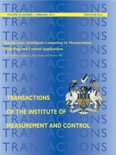
TRANSACTIONS OF THE INSTITUTE OF MEASUREMENT AND CONTROL
Connecting Scholars and Practitioners in Measurement ScienceTRANSACTIONS OF THE INSTITUTE OF MEASUREMENT AND CONTROL, published by SAGE Publications Ltd, is a prestigious journal that has been at the forefront of research in measurement and control since its inception in 1979. With its ISSN 0142-3312 and E-ISSN 1477-0369, this UK-based journal is indexed in reputable databases, showcasing its impact in the field, highlighted by a notable Q2 ranking in Instrumentation for 2023. The journal serves as a vital platform for scholars and practitioners alike, publishing high-quality, peer-reviewed articles that span a range of topics related to measurement technology and control systems. With an increasing focus on interdisciplinary approaches, TRANSACTIONS OF THE INSTITUTE OF MEASUREMENT AND CONTROL strives to advance the understanding and application of innovative measurement and control methodologies, making it an essential resource for academics, industry professionals, and students aiming to enhance their knowledge and expertise in this dynamic field. Although it operates under a traditional subscription model, the journal's commitment to disseminating cutting-edge research remains unwavering, inviting contributions that push the boundaries of instrumentation and control science.